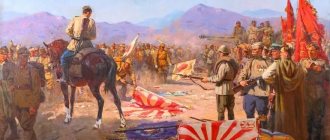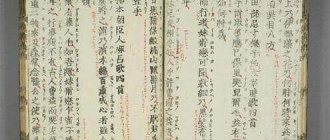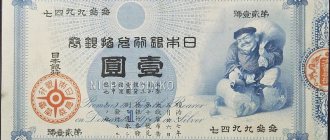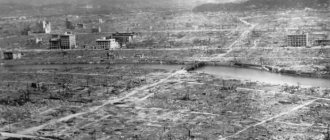The mysterious East has always attracted attention. After all, in essence, it was a completely different life, different from the European one - different traditions, customs, religious views. Japan in this regard is one of the most original, having preserved all its habits and language almost in its original form. This makes the country even more attractive to visit.
Japan is an island country located off the east coast of Asia. It consists of a large series of islands in the northwestern part of an arc that extends approximately 1,500 miles (2,400 km) across the western North Pacific Ocean. Almost the entire country is located on four main islands; from north to south Hokkaido, Honshu, Shikoku and Kyushu. Honshu is the largest of the four, followed by Hokkaido, Kyushu and Shikoku. In addition, there are numerous smaller islands, the main groups of which are the Ryukyu (Nansei) Islands (including Okinawa Island) south and west of Kyushu and Izu, Bonin (Ogasawara) and the volcanic islands south and east of central Honshu. The country's capital, Tokyo, is located in East-Central Honshu and is one of the most populous cities in the world.
The Japanese landscape is rugged and mostly mountainous. There are many active and dormant volcanoes, including Mount Fuji (Fuji-san), which at 12,388 feet (3,776 meters) is Japan's tallest mountain. Heavy rainfall and generally moderate temperatures across much of the country created lush vegetation cover and, despite the mountainous terrain and generally poor soils, allowed the cultivation of a variety of crops. Japan has a large and largely ethnically homogeneous population, which is concentrated in low-lying areas along the Pacific coast of Honshu.
Introduction
Active hostilities in the Far East and in the Pacific Ocean were a consequence of the contradictions that arose in the pre-war years between the USSR, Great Britain, the USA and China, on the one hand, and Japan, on the other. The Japanese government sought to seize new territories rich in natural resources and establish political hegemony in the Far East.
Since the end of the 19th century, Japan has waged many wars, as a result of which it acquired new colonies. It included the Kuril Islands, southern Sakhalin, Korea, and Manchuria. In 1927, General Giichi Tanaka became the country's prime minister, whose government continued its aggressive policy. In the early 1930s, Japan increased the size of its army and created a powerful navy that was one of the strongest in the world.
Soviet-Japanese War Manchuria
In 1940, Prime Minister Fumimaro Konoe developed a new foreign policy doctrine. The Japanese government planned to create a colossal empire stretching from Transbaikalia to Australia. Western countries pursued a dual policy towards Japan: on the one hand, they sought to limit the ambitions of the Japanese government, but on the other hand, they did not in any way interfere with the intervention of northern China. To implement its plans, the Japanese government entered into an alliance with Germany and Italy.
Relations between Japan and the Soviet Union in the pre-war period deteriorated noticeably. In 1935, the Kwantung Army entered the border areas of Mongolia. Mongolia hastily concluded an agreement with the USSR, and Red Army units were introduced into its territory. In 1938, Japanese troops crossed the state border of the USSR in the area of Lake Khasan, but the invasion attempt was successfully repulsed by Soviet troops. Japanese sabotage groups were also repeatedly dropped into Soviet territory. The confrontation escalated further in 1939, when Japan started a war against Mongolia. The USSR, observing the agreement with the Mongolian Republic, intervened in the conflict.
After these events, Japan's policy towards the USSR changed: the Japanese government was afraid of a clash with a strong western neighbor and decided to temporarily abandon the seizure of territories in the north. Nevertheless, for Japan, the USSR was actually the main enemy in the Far East.
Soviet soldiers resting near a fire on Sakhalin
Stages of colonization
Taiwan became the first Japanese colony. In 1895, the Sino-Japanese War came to an end. China, which capitulated, was forced to sign the unequal Treaty of Shimonoseki with the Land of the Rising Sun, according to which part of the Qing territories ceded to the Japanese Empire. Ten years later, in 1905, the Kwantung region of Manchuria and the southern part of Sakhalin Island fell into the sphere of colonial influence, in 1910 - Korea, and during the First World War, at the instigation of the League of Nations - the Caroline, Mariana and Marshall Islands. Japan did not hide its claims to the mentioned territories. Back in the 16th century, Toyotomi Hideyoshi attempted to expand Taiwan, but due to fierce local resistance, the idea failed. Even in 1895, when Taiwan came under the rule of the Imperial Chrysanthemum, the new administration was met with such fierce guerrilla warfare that the sale of Taiwan to France was seriously discussed in the early years. The Japanese, for whom the island became the first experience of colonial rule, did not come up with anything better than to introduce a strict military regime. In 1898, when hopes for quick assimilation did not materialize, it was decided to organize the government in Taiwan according to the Western model: to develop a special set of laws for the locals and to monitor their implementation with an armed iron hand. Only in 1919, when Japan embarked on a democratic path and acquired some colonial experience, a policy of economic development taking into account local characteristics came into force in Taiwan and measures began to integrate and “Japanize” the natives. The situation was similar with Korea and Manchuria, the only difference being that constant confrontations with China required more severe control on the continent. Despite numerous armed uprisings and the dictatorship they provoked, the economy quickly began to develop in the colonized regions. After the suppression of resistance from the local population, further order was maintained by a developed network of police and gendarmerie, coupled with ardently enforced mutual responsibility. As soon as the situation stabilized, “inventory” began - a census and redistribution of land ownership. For peasants, this usually ended in the confiscation of land in favor of the state, since ordinary farmers could not provide the appropriate documents for ownership. In some regions, such as Korea, the lack of arable land available to the peasants was further aggravated by the fact that a significant proportion of the plots remained in the ownership of the aristocracy. In order not to lose their livelihood, people were forced to resort to the help of banks - of course, Japanese ones. Due to the organization of a strong financial and credit system, the development of Southern Sakhalin (or Karafuto Prefecture, as the Japanese like to call this area in a businesslike way) took place. Finance was deliberately poured into the regions in order to speed up their integration into the economy of the metropolis and spur the process of settling new fiefdoms with the Japanese. The next step towards cultural assimilation was the widespread teaching of the Japanese language, culture, and the inculcation of “national morality”, established in the 1920s, while simultaneously displacing local traditions. In parallel with the streamlining of land ownership, the formation of the administration took place. In relation to each of the colonies, Parliament adopted a Basic Decree regulating the rights and obligations of dependent territories. In 1910 - 1920, local government bodies at the provincial, city and village levels were finally formed in all controlled lands, although all their decisions were rather advisory in nature. Geographical proximity had a beneficial effect on the pace of economic development. The rapid establishment of communication routes and the construction of the necessary infrastructure close to sources of resources and labor ensured equally rapid growth of industry and economy throughout the empire. The Japanese authorities approached the issue of industrial development in the colonies thoroughly. In each region, the most profitable industry was established first, for example, mining and ferrous metallurgy in Manchuria (where there were already heavy enterprises and mines abandoned during the war), sugar production in Taiwan, agriculture (mainly rice) in Korea . Not having sufficient resources to develop the military-industrial complex on the islands, the metropolis was forced to move military-industrial complex enterprises to the territory of the colonies. At the same time, proper economic conditions were created to meet the needs of the workers and the army. By 1936, a strong industrial base had been built in Manchuria - a reliable rear in the upcoming war. After this, military enterprises began to appear in other areas.
Non-Aggression Treaty with Japan
In the spring of 1941, the USSR concluded a non-aggression pact with Japan. In the event of an armed conflict between one of the states and any third countries, the second power undertakes to maintain neutrality. But the Japanese Foreign Minister made it clear to the German ambassador in Moscow that the concluded neutrality pact would not prevent Japan from fulfilling the terms of the Tripartite Pact during the war with the USSR.
Before the outbreak of World War II in the east, Japan negotiated with American leaders, seeking recognition of the annexation of Chinese territories and the conclusion of new trade agreements. The ruling elite of Japan could not decide against whom to strike in a future war. Some politicians considered it necessary to support Germany, while others called for an attack on the Pacific colonies of Great Britain and the USA.
Non-Aggression Treaty between Japan and the USSR 1941
Already in 1941, it became obvious that Japan's actions would depend on the situation on the Soviet-German front. The Japanese government planned to attack the USSR from the east if Germany and Italy were successful, after the capture of Moscow by German troops. Also of great importance was the fact that the country needed raw materials for its industry. The Japanese were interested in capturing areas rich in oil, tin, zinc, nickel and rubber. Therefore, on July 2, 1941, at the imperial conference, a decision was made to start a war against the USA and Great Britain. But the Japanese government did not completely abandon plans to attack the USSR until the Battle of Kursk, when it became obvious that Germany would not win the Second World War. Along with this factor, the active military operations of the Allies in the Pacific Ocean forced Japan to repeatedly postpone and then completely abandon its aggressive intentions towards the USSR.
Soviet soldiers with Japanese flags
The situation in the Far East during the Second World War
Despite the fact that hostilities in the Far East never began, the USSR was forced to maintain a large military group in this region throughout the war, the size of which varied in different periods. Until 1945, the Kwantung Army was located on the border, which included up to 1 million military personnel. The local population also prepared for defense: men were mobilized into the army, women and teenagers studied air defense methods. Fortifications were built around strategically important objects.
The Japanese leadership believed that the Germans would be able to capture Moscow before the end of 1941. In this regard, it was planned to launch an attack on the Soviet Union in the winter. On December 3, the Japanese command gave the order to the troops located in China to prepare for transfer to the northern direction. The Japanese were planning to invade the USSR in the Ussuri region and then launch an offensive in the north. To implement the approved plan, it was necessary to strengthen the Kwantung Army. Troops freed after fighting in the Pacific Ocean were sent to the Northern Front.
Kwantung Army
However, the Japanese government's hopes for a quick German victory were not realized. The failure of the blitzkrieg tactics and the defeat of the Wehrmacht armies near Moscow indicated that the Soviet Union was a fairly strong adversary whose power should not be underestimated.
The threat of a Japanese invasion intensified in the fall of 1942. Nazi German troops were advancing into the Caucasus and Volga. The Soviet command hastily transferred 14 rifle divisions and more than 1.5 thousand guns from the Far East to the front. Just at this time, Japan was not actively fighting in the Pacific. However, the Commander-in-Chief's Headquarters foresaw the possibility of a Japanese attack. The Far Eastern troops were replenished from local reserves. This fact became known to Japanese intelligence. The Japanese government again delayed entry into the war.
The Japanese attacked merchant ships in international waters, preventing the delivery of goods to Far Eastern ports, repeatedly violated state borders, committed sabotage on Soviet territory, and sent propaganda literature across the border. Japanese intelligence collected information about the movements of Soviet troops and transmitted them to Wehrmacht headquarters. Among the reasons for the USSR's entry into the Japanese War in 1945 were not only obligations to its allies, but also concern for the security of its borders.
Death to the Japanese Samurai
Settlers. Northern Empires: Japanese Islands
Developing trade is the key to the prosperity of a large empire. The Japanese Empire in the north is expanding its trade presence. Port cities become rich thanks to lucrative routes and exotic goods. But their lands are not enough for them, so they plan to populate more islands, and you can help them with this.
The Japanese Islands expansion for the board game Settlers: Northern Empires introduces two new clans to the game, as well as additional island maps. The clans of the Japanese Empire will allow players to use unusual victory strategies and tactical decisions. According to the game developers,
The Saikoro clan is the most difficult clan in the game to master, but if you understand the basics of selling, the clan's best merchants will provide your empire with profitable deals. People of this clan are experts in negotiations, and they are able to find an approach even to the most greedy and stubborn.
The Umineko clan are port workers.
Hard work and logistics are their strong point. Fill holds and warehouses with goods and trade along the most profitable routes. About the game
Sea peoples from time immemorial lived separately from the mainland, so “Settlers: Northern Empires” is an independent game in the famous series, but with different rules and features, while maintaining a cool design and familiar card mechanics. Each card is filled with humor or references to popular culture, and looking at the illustrations is a special pleasure.
In the board game "Settlers: Northern Empires" you will take command of one of the sea peoples: Vikings, Scots or Inuit. Moreover, each nation has access to two different clans, which, together with the features of the empire, add additional variety and replayability to the gameplay.
You have to build locations, collect and accumulate resources, and, of course, go on expeditions to the islands. Develop your economy and fight for dominance in the north!
Differences from the original "Settlers"
Each empire is divided into two clans, which differ in deck composition, playstyle and difficulty of development. For example, the Scottish Clan Glenn is the easiest to learn, while the MacKinnon Clan is not recommended for beginners and can cause difficulties.
Explore the world! During the expedition phase, you will sail to the islands, plunder and conquer them.
No production - life in the north surrounded by seas is not easy, all the necessary resources will be obtained in other ways.
Now you can accumulate goods!
There is no longer a need to reset them at the end of each round. Attention! This is an addition. To play, you will need the base version of Settlers: Northern Empires.
Entry of the Soviet Union into the war with Japan
Already in the second half of 1943, when the turning point in the Second World War ended, it became clear that after Italy, which had already emerged from the war, Germany and Japan would also be defeated. The Soviet command, foreseeing a future war in the Far East, from that time on almost never used Far Eastern troops on the Western Front. Gradually, these units of the Red Army were replenished with military equipment and manpower. In August 1943, the Primorsky Group of Forces was created as part of the Far Eastern Front, which indicated preparations for a future war.
At the Yalta Conference, held in February 1945, the Soviet Union confirmed that the agreement between Moscow and the allies on participation in the war with Japan remained in force. The Red Army was supposed to begin military operations against Japan no later than 3 months after the end of the war in Europe. In return, J.V. Stalin demanded territorial concessions for the USSR: the transfer to Russia of the Kuril Islands and part of the island of Sakhalin assigned to Japan as a result of the 1905 war, the lease of the Chinese port of Port Arthur (on modern maps - Lushun) for the Soviet naval base ). The Dalniy commercial port was supposed to become an open port with the interests of the USSR primarily respected.
Stalin Churchill and Roosevelt at the Yalta Conference 1945
By this time, the Armed Forces of the United States and Great Britain had inflicted a number of defeats on Japan. However, her resistance was not broken. The demand of the United States, China and Great Britain for unconditional surrender, presented on July 26, was rejected by Japan. This decision was not unreasonable. The USA and Great Britain did not have sufficient forces to conduct an amphibious operation in the Far East. According to the plans of American and British leaders, the final defeat of Japan was envisaged no earlier than 1946. The Soviet Union, by entering the war with Japan, significantly brought the end of World War II closer.
The Empire of Japan and the beginning of World War I
On August 15, 1914, the Japanese government presented Germany with an ultimatum, demanding the withdrawal of German troops from the Pacific Ocean. Berlin was demanded to withdraw the ships of the Imperial East Asian Squadron from Qingdao, blow up the port fortifications and transfer the Shandong Peninsula to the Japanese Empire. The Japanese government also demanded that the German Pacific possessions be transferred to them. The Germans were surprised by this position; they were counting on benevolent neutrality - good ties had been established with Japan in the pre-war period. Having received no response to this ultimatum, the Empire of Japan declared war on Germany by imperial decree on August 23, 1914. The Japanese justified the start of the war by the fact that the Germans were busy with military preparations in their possessions, and the armed ships of Germany, “cruising in the waters of East Asia, threaten our trade and the trade of our ally” (England had been an ally of Japan since 1902, the treaty was extended in 1911 ).
This was a serious blow for the German Empire:
“Firstly, they believed that Japan’s neutrality, benevolent towards Germany, would force Russia to maintain significant military contingents in the East. Japan's decision allowed Russia to transfer Siberian corps to the West.
— Secondly, Japan’s entry into the war on the side of the Entente made the German Pacific possessions defenseless, the preponderance of forces was too great not in its favor.
— Thirdly, the Germans planned to wage an active war on communications in the Pacific and Indian Oceans, with the help of the forces of their squadron of cruisers, with the fortified Qingdao as their base. After Japan's decision, this plan was called into question. Qingdao could withstand an attack from an expeditionary force from Russia, France or Britain, but not from a regular Japanese army.
German position near Qingdao.
Pre-war situation
In 1897, the city of Qingdao, as part of the territory of Jiaozhou Bay, under pressure from Germany, was transferred by the Chinese to Germany under a concession. The Germans turned the city into a strategically important port under the Maritime Office (other German colonies were under the Colonial Office). Qingdao became the base of the East Asian squadron, the zone of action of German cruisers was the Pacific Ocean. In addition, the Third Naval Battalion was based in Qingdao. The Germans successfully spread their economic influence throughout the Shandong province.
Since 1912, the East Asian squadron was led by Vice Admiral Maximilian von Spee. The squadron included the armored cruisers Scharnhorst (flagship) and Gneisenau, the light cruisers Emden, Nuremberg and Leipzig. The German crews were well trained, but the ships were already outdated and could not withstand the superior forces of the British fleet in open battle (and especially the combined British-Japanese Navy). Therefore, in the event of war, the squadron had to avoid engaging in battles with large enemy forces, operating on enemy communications, sinking single, weaker warships and transports.
Japan's participation in the war had its own specifics. The leadership of the Japanese armed forces was actually divided into two camps: the army was built on the Prussian model and trained by German officers, so the army elite had a negative attitude towards the war; The Japanese Navy was created mainly with the help of Britain and trained in the English manner. In addition, Japan had an alliance with England. This was a source of constant controversy within the Japanese military leadership. It should be noted that many ordinary Japanese did not even know that their country had entered the war. The information was given minimally so as not to alarm people.
There was also no unity in Britain regarding Japan's entry into the war. Foreign Minister Sir Edward Gray feared Japanese expansion in the Pacific. Strengthening its position at the expense of Germany and the negative reaction of the USA, Australia and New Zealand to the actions of the Japanese. The First Lord of the Admiralty, Winston Churchill, looked at the situation from a military point of view; in his opinion, due to the fact that the main forces of the British fleet could not leave the European Theater of Operations, it was the Japanese Navy that should have become the main force that would ensure freedom of navigation in the Chinese zone seas. As a result, military interests prevailed over geopolitical ones.
It must be said that by the beginning of the First World War, relations between Great Britain and Japan were badly damaged, so no one would be surprised if the Japanese government refused to participate in the war. The main reason for the aggravation of British-Japanese relations was China (at that period of history the “prey” of the great powers). The Japanese tried to penetrate there and strengthen their influence, undermining the still strong position of the British. Japan was slowly but surely ousting the British from the Chinese domestic market. As a result, a rational view of the empire’s participation in the war won in Japan. The strategic course for dominance in the Asia-Pacific region was taken back at the end of the 19th century, so it was necessary to take part in the war in order to strengthen positions in the region. But it was necessary to choose an opponent by the teeth. The war in alliance with Germany promised maximum benefits - you could gain possession of Russia, Britain and France, but there was less chance of victory. The Japanese would have to confront the powerful Russian army, which could be supported by the naval and ground forces of Britain, France, Australia, New Zealand, and units from British India. In the event of a speech by the Japanese Empire against the Entente, there was also a high probability of the United States entering the war (which later happened). It was suicide.
Satsuma is a Japanese semi-dreadnought battleship.
There were no such problems with Germany. The German Empire colonized a number of territories in the Asia-Pacific region (the islands of Yap, Samoa, Marshall, Caroline, Solomon Islands, etc.), and also leased the territory of part of the Shandong Peninsula from the Chinese. Moreover, Berlin did not have any significant armed forces in its overseas possessions (there were only colonial police on the islands), and the main forces of its fleet were blocked in European ports and could not deliver troops there. And even if the German Empire had fully implemented the Schlieffen plan, having carried out its blitzkrieg against France and Russia, quickly winning the war in Europe (the German General Staff took 2-3 months for this; all this time the Qingdao garrison had to hold out), with Japan the Germans they wouldn't be able to get even. Most likely, peace would have been concluded on the terms of restoring the pre-war situation.
The war with Germany contributed not only to strengthening the position of the Japanese Empire in the Pacific, but also to advancement in China.
Japanese battleship Suo, flagship of Vice Admiral Kato (former Russian battleship Pobeda).
Start of hostilities
The Japanese began preparing for the operation against Qingdao on August 16, when the order was given to mobilize the 18th Infantry Division. An agreement was worked out with representatives of Britain and France, according to which the 1st Japanese squadron protected the sea routes north of Shanghai, the 2nd squadron was supposed to operate against Qingdao, and the 3rd cruiser squadron ensured shipping between Shanghai and Hong Kong. And two Japanese cruisers joined the squadron of British Admiral Jeram to search for German ships in Oceania.
Seizure of Germany's island possessions.
In August - September 1914, the Japanese Navy landed troops that captured the islands of Yap, the Marshall, Caroline and Mariana Islands. The New Zealand expeditionary force and the Australians occupied German territories in New Guinea, New Britain, the Solomon Islands, and the Samoan Islands. After capturing Jaluit in the Marshall Islands, a Japanese squadron under Vice Admiral Yamaya occupied Truk Harbor in the Caroline Islands on 12 October. On October 1, Rear Admiral Tatsuo Matsumura's squadron occupied the German-owned port of Rabaul on the island of New Britain. On October 7, the Japanese arrived on the island of Yap, where the German gunboat Planet was there. Her crew hastily scuttled the ship to prevent it from falling into enemy hands. By early November 1914, the only territory in the Asia-Pacific region controlled by Germany was the port of Qingdao.
It should be noted that the actions of the Japanese alarmed the leadership of Australia and New Zealand, who themselves hoped to seize these territories. By the end of 1914, the Japanese and British governments had difficulty resolving the problem of the German Pacific possessions. London agreed that the Marianas, Caroline and Marshall Islands would remain with the Japanese Empire, and British Commonwealth forces would not operate north of the equator.
The death of the German squadron.
When the war began, the ships of the German East Asian cruising squadron were off the island of Ponape, Admiral von Spee was conducting a raid on the German colonies. Realizing that the Japanese were blockading Qingdao, he decided to leave only destroyers and gunboats in the Chinese port, and gathered large ships near the Mariana Islands, where a military meeting was held on August 13. The Council decided to go to the shores of Chile, the Chilean government was favorable to Germany and the ships could count on fuel and repairs.
Only one light cruiser, Emden, was sent to the Indian Ocean. The Emden sank 23 merchant ships between August 1 and November 9, 1914. On September 22, the captain of the Emden, von Müller, used a military trick (a false pipe was installed on the ship so that it would be mistaken for a British ship) and fired on the Indian port of Madras, destroying an oil storage facility. On October 28, using the same trick as in Madras, the German cruiser entered the port of Penang and, taking advantage of the effect of surprise, destroyed the Russian armored cruiser Zhemchug with two torpedoes. While leaving, the Germans sank the French destroyer Musket. On November 9, 1914, the German cruiser took on the more powerful Australian cruiser Sydney and died (battle near the Cocos Islands).
On November 1, 1914, von Spee's squadron, near the Chilean port of Coronel, defeated the British squadron of Rear Admiral Christopher Cradock - the armored cruisers Good Hope and Monmouth were sunk, killing 1,654 British sailors, including the admiral himself. The British sent the squadron of Vice Admiral Frederick Sturdee to the South Atlantic; it included 2 new battlecruisers. The squadrons met at the English naval base of Port Stanley on the Falkland Islands - a battle took place on December 8. The German squadron was destroyed.
The German East Asia Squadron (ships steaming in the background) leaves Valparaiso (Chile) November 3, 1914. Scharnhorst and Gneisenau are ahead, followed by Nuremberg. In the foreground are Chilean ships.
Capture of Qingdao
The Germans tried to transfer Qingdao to China, but this move failed, France and Britain prevented this. The governor of the port and the commander of all the troops stationed there was Captain 1st Rank Alfred Meyer-Waldeck. In pre-war times, he commanded 75 officers and 2,250 soldiers. The fortress was quite well fortified: it had 2 lines of defense on the land side and 8 coastal batteries that covered the port from the sea. The first line of defense of Qingdao was located 6 kilometers from the city center and consisted of 5 forts protected by a moat with a wire fence at the bottom. The second line of defense included stationary artillery batteries. On the landward side, the fortress was defended by up to 100 guns. In addition, artillery support could be provided by the guns of the Austrian cruiser Kaiserin Elisabeth, two destroyers, and 4 gunboats. Through mobilization, the commandant of the fortress, Meyer-Waldeck, managed to increase the size of the garrison to 183 officers, 4572 privates (they were armed with 150 guns, 25 mortars, 75 machine guns).
The enemy forces were significantly higher. To capture the port-fortress of Qingdao, a Japanese expeditionary force was created under the command of Lieutenant General Kamio Mitsuomi (his chief of staff was General of the Engineering Troops Henzo Yamanashi). The corps included the reinforced 18th Infantry Division - 32-35 thousand people with 144 cannons and 40 machine guns. The participation of the British was symbolic; the Japanese were joined by an English detachment from Weihaiwei under the leadership of General N.U. Bernard-Distona - a Welsh battalion and half a battalion of Sikhs (total 1.5 thousand people). The British-Japanese allied naval group was also very powerful. It included the 2nd Japanese squadron of Admiral Hiroharu Kato, it consisted of 39 warships: 3 squadron battleships, 2 coastal defense battleships, 3 armored cruisers, 4 light cruisers, the rest were destroyers, gunboats, and auxiliary ships. One battleship and two destroyers arrived from the British side.
On August 27, 1914, a Japanese squadron blocked the port, and on August 28, the first naval bombardment of the city was carried out. On the night of August 30-31, the Japanese suffered their first loss - the destroyer Shirotae ran aground off the island of Lentao (on September 4, a German destroyer finished off the ship). On September 2, in Longkou Bay on the territory of neutral China, approximately 180 kilometers from the German fortress, the landing began. A complete blockade of Qingdao was established on September 19, when the railway was cut.
The Japanese were very careful, taking into account the experience of the Russian-Japanese War, and they were also afraid of the professionalism of the Germans, so they carried out the landing for more than a month (until October 5), and crossed the border of the German colony only on September 25 (the English detachment arrived on the 24th). On the 26th, an attack began on the German positions; on September 29, the Germans were driven out of the first line of defense. After this, the Japanese began to prepare for the assault on Qingdao itself.
The ships of the besiegers and defenders acted actively. Entente battleships repeatedly fired at German positions, but did not have much success. But the return fire brought success to the Germans - on October 14, the British battleship Triumph was hit by a 240-mm shell, and the ship was forced to leave for repairs in Weihaiwei. During minesweepers, the Japanese lost 4 minesweepers - they were blown up by mines and sank. The Japanese successfully used carrier-based aircraft for the first time - seaplanes from the Wakamiya transport attacked and sank a German minelayer, in addition, the planes conducted reconnaissance. In turn, the German ships supported the left flank of Qingdao’s defense with their artillery fire.
The only German combat unit that was able to break into the sea was the old destroyer No. 90 under the command of Lieutenant Commander Brunner. Realizing the hopelessness of the idea of a daytime attack by an enemy squadron and a duel with enemy destroyers, it was decided to bypass the patrols at night and torpedo a large enemy ship. After this, the ship was supposed to go to one of the neutral ports of China, load with coal and return, repeating the night attack. On the night of October 17-18, Brunner was able to get through the enemy’s first line (destroyers), encountering a large ship (the Germans mistook it for a battleship) and attacked. The German destroyer fired three torpedoes, all hitting the target - a terrible explosion destroyed the old Japanese armored cruiser Takachiho. Almost the entire crew died - 271 people with the captain. Brunner did not take risks and return to Qingdao; when the fuel began to run out, he threw the ship ashore, and the crew was interned by the Chinese authorities.
The siege of the city proceeded methodically, the Japanese, with the help of siege artillery, destroyed fortifications, assault units and attacked individual German positions. On October 31, heavy artillery preparation began and lasted for a week (the shelling especially intensified on November 4). 43.5 thousand shells were fired at the fortress, including 800 - 280 mm. On November 6, the Japanese were able to make passages through the ditch near the central group of fortifications; Japanese assault troops reached the rear of German positions on Mount Bismarck and west of Mount Iltis.
Everything was prepared for the decisive assault. But at 5.15 am on November 8, the commandant of the Meyer-Waldeck fortress gave the order to surrender. Although the defense capabilities had not yet been exhausted, 202 officers and 4,470 soldiers were captured (the total German losses were about 700 people). The Japanese lost about 2 thousand people. Apparently, the main reason for the surrender of the fortress was the lack of will to resist toughly until the last possible opportunity. The Germans planned that Qingdao would hold out for 2-3 months of active defense: officially the fortress held out for 74 days (from August 27 to November 8), but active hostilities at the fortress lasted only 44 days (from September 25 to November 8).
Results of the 1914 campaign
After this, the active phase of hostilities for the Japanese Empire ended. The results of the war in 1914 were quite successful for the Japanese: they occupied a number of islands north of the equator, an important bridgehead in China, and sharply expanded their military presence in the Pacific Ocean. And all this with very small losses and limited use of their armed forces. True, political recognition of these acquisitions was still a long way off. After the capture of Qingdao, which, according to early agreements, the Japanese promised to hand over to the Chinese for a ransom, disputes arose with Britain, since Japan did not plan to fulfill its promises. In addition, Australia, New Zealand and the United States were extremely unhappy with the Japanese Empire's occupation of the islands in the Pacific Ocean. The balance of power in the Asia-Pacific region was shifted in favor of Japan.
Strengths and plans of the parties
The Soviet-Japanese War or the Manchurian Operation began on August 9, 1945. The Red Army was faced with the task of defeating Japanese troops in China and North Korea.
Back in May 1945, the USSR began transferring troops to the Far East. 3 fronts were formed: 1st and 2nd Far Eastern and Transbaikal. The Soviet Union used border troops, the Amur military flotilla and ships of the Pacific Fleet in the offensive.
Soviet soldiers on the deck of a transport during the transition to Shumshu Island
The Kwantung Army included 11 infantry and 2 tank brigades, more than 30 infantry divisions, cavalry and mechanized units, a suicide brigade, and the Sungari River Flotilla. The most significant forces were stationed in the eastern regions of Manchuria, bordering Soviet Primorye. In the western regions, the Japanese stationed 6 infantry divisions and 1 brigade. The number of enemy soldiers exceeded 1 million people, but more than half of the fighters were conscripts of younger ages and of limited fitness. Many Japanese units were understaffed. Also, the newly created units lacked weapons, ammunition, artillery and other military equipment. Japanese units and formations used outdated tanks and aircraft.
The troops of Manchukuo, the army of Inner Mongolia and the Suiyuan Army Group fought on the side of Japan. In the border areas, the enemy built 17 fortified areas. The command of the Kwantung Army was carried out by General Otsuzo Yamada.
The plan of the Soviet command provided for the delivery of two main strikes by the forces of the 1st Far Eastern and Transbaikal Fronts, as a result of which the main enemy forces in the center of Manchuria would be captured in a pincer movement, divided into parts and destroyed. The troops of the 2nd Far Eastern Front, consisting of 11 rifle divisions, 4 rifle and 9 tank brigades, in cooperation with the Amur Military Flotilla, were supposed to strike in the direction of Harbin. Then the Red Army was supposed to occupy large populated areas - Shenyang, Harbin, Changchun. The fighting took place over an area of more than 2.5 thousand km. according to the area map.
Map of the Soviet-Japanese War
Start of hostilities
Simultaneously with the beginning of the offensive of the Soviet troops, aviation bombed areas of large troop concentrations, strategically significant objects and communications centers. Pacific Fleet ships attacked Japanese naval bases in North Korea. The offensive was led by the commander-in-chief of Soviet troops in the Far East, A. M. Vasilevsky.
As a result of the military operations of the troops of the Trans-Baikal Front, which, having crossed the Gobi Desert and the Khingan Mountains on the first day of the offensive, advanced 50 km, significant groups of enemy troops were defeated. The offensive was hampered by the natural conditions of the area. There was not enough fuel for the tanks, but the Red Army units used the experience of the Germans - the supply of fuel by transport aircraft was organized. On August 17, the 6th Guards Tank Army reached the approaches to the capital of Manchuria. Soviet troops isolated the Kwantung Army from Japanese units in Northern China and occupied important administrative centers.
The Soviet group of troops, advancing from Primorye, broke through the strip of border fortifications. In the Mudanjiang area, the Japanese launched a series of counterattacks, which were repulsed. Soviet units occupied Girin and Harbin, and, with the assistance of the Pacific Fleet, liberated the coast, capturing strategically significant ports.
The Soviet army occupied Harbin
Then the Red Army liberated North Korea, and from mid-August the fighting took place on Chinese territory. On August 14, the Japanese command initiated negotiations on surrender. On August 19, enemy troops began to surrender en masse. However, hostilities in World War II continued until early September.
Simultaneously with the defeat of the Kwantung Army in Manchuria, Soviet troops carried out the South Sakhalin offensive operation and landed troops on the Kuril Islands. During the operation in the Kuril Islands on August 18-23, Soviet troops, with the support of ships of the Peter and Paul Naval Base, captured the island of Samusyu and occupied all the islands of the Kuril ridge by September 1.










